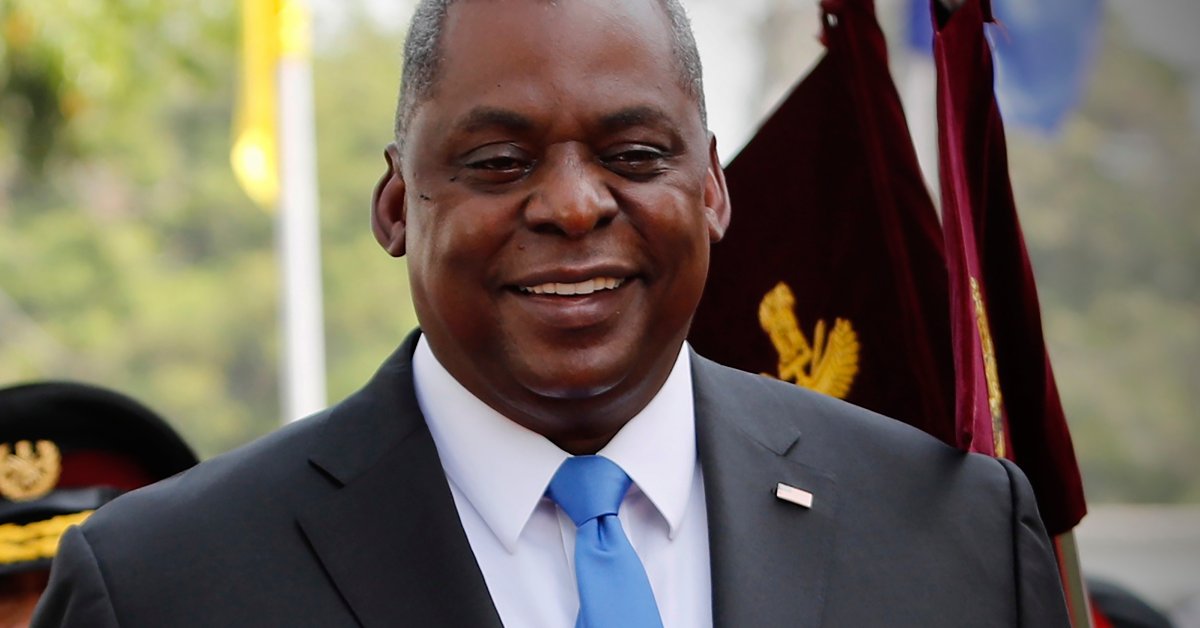[ad_1]
KABUL, Afghanistan — U.S. Defense Secretary Lloyd Austin arrived Sunday in Kabul on his first trip to Afghanistan as Pentagon chief, amid swirling questions about how long American troops will remain in the country.
State-owned Radio and Television Afghanistan and popular TOLO Television reported Austin’s arrival in Kabul from India. He met with senior Afghan government officials, including President Ashraf Ghani.
According to the Washington Post, which was among the small group of U.S. media travelling with him, Austin said senior U.S. officials want to see “a responsible end to this conflict” and “a transition to something else.”
“There’s always going to be concerns about things one way or the other, but I think there is a lot of energy focused on doing what is necessary to bring about a responsible end and a negotiated settlement to the war,” Austin said.
President Joe Biden said last week in an ABC News interview that it will be “tough” for the U.S. to meet a May 1 deadline to withdraw troops from Afghanistan. But he said that if the deadline, which is laid out in an agreement between former President Donald Trump’s administration and the Taliban, is extended, it wouldn’t be by a “lot longer.”
In response, the Taliban on Friday warned of consequences if the U.S. doesn’t meet the deadline. Suhail Shaheen, a member of the Taliban negotiation team, told reporters that if U.S. troops stay beyond May 1, “it will be a kind of violation of the agreement. That violation would not be from our side. … Their violation will have a reaction.”
Austin met with Ghani and according to a statement released by the presidential palace both sides condemned the increase in violence in Afghanistan. There was no mention of the May 1 deadline. Washington is reviewing the agreement the Trump administration signed with the Taliban last year and has been stepping up pressure on both sides in the protracted conflict to find a swift route to a peace agreement.
In a sharply worded letter to Ghani earlier this month, U.S. Secretary of State Antony Blinken said it is urgent to make peace in Afghanistan and all options remain on the table. He also warned that it is likely the Taliban would make swift territorial gains if U.S. and NATO troops withdrew. United States spends $4 billion a year to sustain Afghanistan’s National Security Forces .
The Taliban warned America against defying the May 1 deadline at a press conference in Moscow, the day after meeting with senior Afghan government negotiators and international observers to try to jumpstart a stalled peace process to end Afghanistan’s decades of war.
Washington has also given both the Taliban and the Afghan government an eight-page peace proposal, which both sides are reviewing. It calls for an interim so-called “peace government” which would shepherd Afghanistan toward constitutional reform and elections.
Ghani has resisted an interim administration causing his critics to accuse him of clinging to power. He says elections alone would be acceptable to bring a change of government.
Both the U.S. and Kabul have called for a reduction in violence leading to a cease-fire. The Taliban say a cease-fire would be part of the peace negotiations. However, the insurgent movement has not attacked U.S. or NATO troops since signing the agreement.
However, U.S. military commanders and NATO leaders have argued that the Taliban have not lived up to their part of the peace agreement, which includes a reduction in violence and a separation from al-Qaida and other terror groups.
NATO Secretary-General Jens Stoltenberg said last month that the alliance “will only leave when the time is right” and when conditions have been met.
“The main issue is that Taliban has to reduce violence, Taliban has to negotiate in good faith and Taliban has to stop supporting international terrorist groups like Al Qaeda,” he said.
Austin has said little on the record about the ongoing stalemate. After a virtual meeting of NATO defense ministers, Austin told reporters that “our presence in Afghanistan is conditions based, and Taliban has to meet their commitments.”
Austin’s stop in Afghanistan marks his first return to a U.S. warzone in the Middle East since taking the Pentagon post. But he spent a great deal of time in the region during his service as an Army commander. Austin, a retired four-star general, served in Afghanistan as commander of the 10th Mountain Division. And from 2013-2016 he was the head of U.S. Central Command, which oversees the wars in Iraq and Afghanistan.
The Afghanistan visit comes at the end of Austin’s his first overseas trip as secretary. After a stop in Hawaii, he went to Japan and South Korea, where he and Secretary of State Blinken met with their defense and foreign ministers.
___
Associated Press writer Kathy Gannon contributed from Islamabad. Baldor reported from Washington
[ad_2]
Source link





